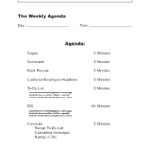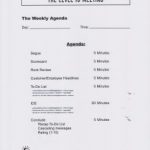

Most business owners would agree that good communication is important to building a business. What they often overlook, however, are three critical factors that make that communication POWERFUL.
Whether you are running a business or flying an airplane, these key factors can ensure a safe flight, and make an ordinary business an extraordinary one.
Factor #1: Recognize that every business has its own unique language
Business owners must recognize that every organization has its own language, and everyone that is a part of that organization needs to understand it.
In aviation, pilots speak a specific language with air traffic control as we get a “clearance” for a flight. The sequence of instructions is confirmed when the pilot reads it back to the controller and gets the acknowledgement of “readback correct.” This powerful communication ensures a safe flight. Everyone is on the same page. If a non-pilot overheard the clearance, it would not resonate or make sense, since it’s unique to the aviation community.
We have a language in EOS, too. Terms like Rocks, Level 10 meetings and Meeting Pulse are used to describe goals, meeting structure and meeting frequency. When we encounter an issue, we “drop it down”—a phrase that means to add it to the Issues List. These words or phrases may not make sense to people who aren’t familiar with the language of EOS. But they do make sense to those who are part of an EOS run company!
Factor #2: Understand the importance of listening and interpreting
Powerful communication is not just talking or writing. The true power comes from listening and interpreting. This two-way communication enables a business and its people to stay on course. These skills are critical in leadership, but most leaders just don’t demonstrate them consistently.
Before takeoff on a recent flight, I heard other pilots on the radio reporting mixed icing at certain cloud layers, a condition that can cause ice to build up on the plane’s wings. Based on that information, I decided to fly at a higher altitude to stay clear of the icy cloud layer. Listening and interpreting what I heard gave me insight so I could make the right choice for a safe flight.
Listening and interpreting is key to problem-solving. EOS run companies use IDS—Identify, Discuss and Solve. This process requires active listening and asking thoughtful questions to get to the root of an issue and then solve them.
Factor #3: Proper communication cadence
Powerful communication happens when we are intentional about what and when we communicate, and who we communicate to.
When pilots fly on an instrument flight plan, there is always a check-in as we fly from one sector to the next. The air traffic controller reads the frequency and new altimeter setting, and pilots read it back to confirm it’s correct before being handed off to the new controller. We communicate the same sequence of information every time to make sure we stay on the same page.
In EOS, managers intentionally and proactively schedule a quarterly conversation with their individual employees. They discuss roles and responsibilities, Rocks, and any feedback or thoughts the employee wants to share on a quarterly cadence.
How powerful is your business’s communication? I challenge you to examine your communications practices and identify how many of these critical factors you consistently practice. What are you doing well? What areas could use improvement? Please share your thoughts in the comments below!












































11710 Plaza America Drive, Suite 2000 Reston, VA 20190
703.278.CORE (2673)
Leave a Reply